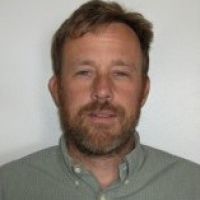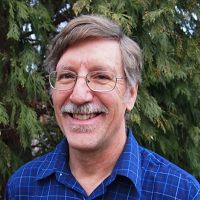Fullhart et al. 2018
Water flow modeling with dry bulk density optimization to determine hydraulic properties in mountain soils
Fullhart, A.T., Kelleners, T.J., Chandler, D.G., McNamara, J.P., and M.S. Seyfried (2018)
Soil Science Society of America Journal
-
Reynolds, COLLABORATOR
-
Reynolds, INVESTIGATOR
Abstract
A new method for determining profile-average and depth-wise hydraulic properties in heterogeneous mountain soils is presented using the GEOtop watershed model in 1-D vertical mode. Dry soil bulk density–converted volumetric soil water retention data are used to determine van Genuchten soil water retention parameters, and the Kozeny–Carman equation is used to determine saturated soil hydraulic conductivity. Optimum dry soil bulk densities are identified by minimizing the sum of squared error between measured and calculated soil water content time series. The new method was tested using soil moisture data from soil profiles at the Dry Creek Experimental Watershed, Boise, ID, and the Libby Creek Experimental Watershed, Laramie, WY. Results of different scenarios showed that the optimization of a single profile-average dry soil bulk density is a good option for describing soil water flow in the heterogeneous mountain soils. Soil water content modeling efficiency (ME) values of 0.084 ≤ ME ≤ 0.745 and –2.443 ≤ ME ≤ 0.373 were found for the Dry Creek and Libby Creek sites, respectively. Relatively low ME values for the deepest sensor depths for some scenarios were attributed to the overestimation of soil water freezing and uncertainty in the soil water retention function near saturation. The resulting calibration procedure is computationally efficient because only one parameter (dry soil bulk density) is optimized.
Citation
Fullhart, A.T., Kelleners, T.J., Chandler, D.G., McNamara, J.P., and M.S. Seyfried (2018): Water flow modeling with dry bulk density optimization to determine hydraulic properties in mountain soils. Soil Science Society of America Journal. DOI: 10.2136/sssaj2017.06.0196
Explore Further


